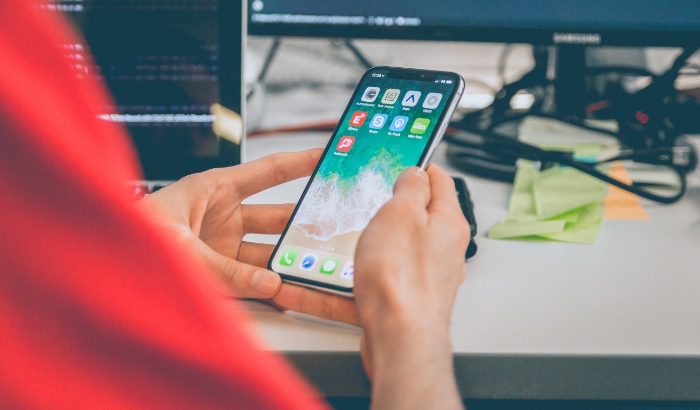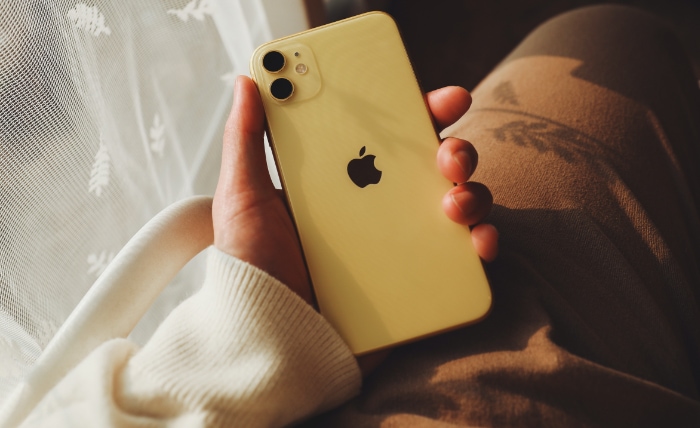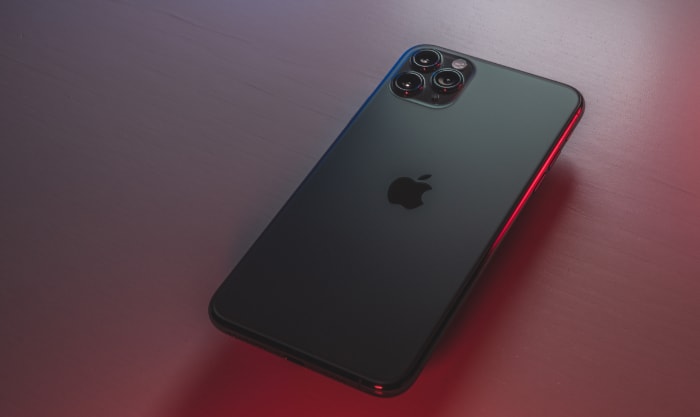How Accurate Is ‘Find My iPhone'? A Look Into Its Precision

In our increasingly digital and mobile world, our smartphones have become essential lifelines, holding our personal information, contacts, work data, and even financial details. Consequently, misplacing our phones or, worse, having them stolen can be a daunting experience. One feature that seeks to mitigate this issue for iPhone users is Apple's ‘Find My iPhone' function.
‘Find My iPhone' is a free service offered by Apple that allows you to locate, lock, or erase your device remotely if it's lost or stolen. It uses GPS and other technological facets to pinpoint the location of your device.
This incredibly useful tool can provide peace of mind in stressful situations, but how reliable is it? How accurate is ‘Find My iPhone', and can you truly depend on it to find your lost device?
Understanding the Mechanics of ‘Find My iPhone'
Before we dive into the accuracy of ‘Find My iPhone', it is essential to understand the underlying mechanisms that enable this powerful feature.
From leveraging GPS technology to utilizing the power of crowdsourced data, ‘Find My iPhone' employs a variety of techniques to pinpoint the location of your lost or stolen device.
How “Find My iPhone” Works: GPS, Wi-Fi, Bluetooth, and Cellular Data
‘Find My iPhone' is not solely reliant on one form of technology. Instead, it uses a combination of GPS, Wi-Fi, Bluetooth, and cellular data to locate your device.
GPS: The Global Positioning System is a satellite-based system that provides geolocation data. ‘Find My iPhone' uses GPS to obtain broad location information about your lost device.
Wi-Fi: The service also utilizes Wi-Fi networks to improve accuracy. If your device is connected to a Wi-Fi network, ‘Find My iPhone' can determine its location more precisely by using the network's IP address.
Bluetooth: In newer iOS versions, ‘Find My iPhone' can leverage Bluetooth signals from your lost device to locate it. This is particularly useful when the device is nearby, as Bluetooth has a limited range.
Cellular Data: When GPS and Wi-Fi are not available, the ‘Find My iPhone' feature can use cellular data to triangulate the position of your device based on cell towers.
The Role of Device Settings in ‘Find My iPhone's Functionality
To maximize the efficiency of ‘Find My iPhone', certain device settings play a crucial role.
Importance of Internet Connectivity: For ‘Find My iPhone' to work effectively, your device needs to be connected to the internet. This can be through Wi-Fi or cellular data. The service sends location updates to iCloud which can then be accessed by you from another device.
Privacy Settings and Their Impact on ‘Find My iPhone': ‘Find My iPhone' must be enabled in your iCloud settings for it to function. Additionally, location services must be turned on, as the feature uses this data to track your device's location.
In summary, ‘Find My iPhone' uses a multi-pronged approach, leveraging various technologies to locate your device. Furthermore, the device's settings, especially its connectivity and privacy settings, can greatly impact the feature's performance.
Factors that Impact the Accuracy of ‘Find My iPhone'
While ‘Find My iPhone' leverages a range of technologies to locate lost devices, several factors can influence the accuracy of its location tracking. This section will detail these variables and explain their potential impact.
Overview of Factors Impacting Accuracy
Three primary factors can affect the precision of ‘Find My iPhone's location tracking:
Physical Barriers: These can include buildings, underground parking structures, and other large constructions that may interfere with GPS, Wi-Fi, or cellular signals.
Environmental Conditions: Weather conditions, such as heavy rain or snow, can interfere with GPS signals, while the device's proximity to Wi-Fi or cellular towers can impact network connectivity.
Network Availability and Strength: The presence and strength of Wi-Fi, cellular, and Bluetooth signals can influence the service's ability to accurately track a device's location.
Detailed Examination of Each Factor

Let's dig deeper into how each of these factors influences the location accuracy of ‘Find My iPhone'.
Impact of Physical Barriers: Large structures can disrupt or block GPS signals, making it challenging for ‘Find My iPhone' to accurately locate a device. For example, if a device is in a basement or an underground parking lot, the GPS signals may not reach it, causing the location to be inaccurate. Similarly, concrete and metal structures can interfere with Wi-Fi and cellular signals, affecting the feature's precision.
Effect of Environmental Conditions: Severe weather conditions, especially those with substantial atmospheric disruption, can distort GPS signals. This distortion can lead to less accurate location tracking. Additionally, the device's distance from Wi-Fi or cellular towers can impact the strength and availability of these signals, influencing ‘Find My iPhone's accuracy.
Influence of Network Availability and Strength: ‘Find My iPhone' relies heavily on various networks (Wi-Fi, cellular, and Bluetooth) to function effectively. If these networks are weak or unavailable, it can significantly impact the accuracy of location tracking. For instance, in remote areas with weak cellular coverage, ‘Find My iPhone' might struggle to provide precise location details.
Understanding these factors is crucial in evaluating the accuracy of ‘Find My iPhone'. While the feature utilizes a comprehensive approach to locate devices, these factors can challenge its precision.
Case Studies: “Find My iPhone” in Action
Understanding the efficacy of ‘Find My iPhone' is best achieved by looking at real-world instances of its use. We've gathered a collection of case studies that highlight both successful and less successful applications of the feature.
These scenarios will give us a broader perspective of how ‘Find My iPhone' operates in real-world conditions, under the influence of the factors discussed in the previous section.
Success Stories of Using “Find My iPhone”
There have been numerous instances where ‘Find My iPhone' has accurately located lost or stolen devices, sometimes under remarkable circumstances.
Case Study 1 – Lost in the Park: In one case, a user misplaced their iPhone while on a hike. Despite being in a relatively remote area with limited Wi-Fi and cellular coverage, ‘Find My iPhone' was able to pinpoint the device's location using GPS data. The user successfully recovered their iPhone with the help of the map and the sound play feature.
Case Study 2 – Recovering a Stolen iPhone: In another incident, an iPhone was stolen in a city. ‘Find My iPhone' utilized local Wi-Fi networks and cellular data to track the device's location. The phone's owner, with the help of local law enforcement, was able to recover the device from the thief.
Less Successful or Failed Instances of “Find My iPhone”
On the other hand, there have been situations where ‘Find My iPhone' was unable to deliver accurate results due to various influencing factors.
Case Study 3 – Underground Misplacement: In a case where an iPhone was accidentally left in an underground parking structure, ‘Find My iPhone' struggled to provide an accurate location. The GPS signal couldn't penetrate the structure, and the absence of Wi-Fi networks resulted in a broad and inaccurate location range.
Case Study 4 – Rural Area Dilemma: In a rural area with poor network connectivity, a lost iPhone was challenging to track. The lack of Wi-Fi and weak cellular signals made it difficult for ‘Find My iPhone' to provide an accurate location. Instead, it showed a wide potential radius where the device could be.
Analysis of Contributing Factors
These case studies illustrate how the factors we previously discussed – physical barriers, environmental conditions, and network availability – can significantly influence ‘Find My iPhone's accuracy.
Each success or failure highlights the importance of understanding the limitations and strengths of this feature, leading us to our next section on how to improve ‘Find My iPhone's accuracy.
How to Improve the Accuracy of ‘Find My iPhone'
Given the factors that can influence the accuracy of ‘Find My iPhone', there are several steps users can take to optimize the functionality and precision of this feature. While we cannot control all variables, such as environmental conditions, we can certainly manage device settings to ensure the best possible outcome.
Tips for Enhancing the Accuracy of ‘Find My iPhone'
Optimizing Device Settings: One of the critical steps to improve the accuracy of ‘Find My iPhone' is to ensure that the required settings are enabled. This includes turning on ‘Find My iPhone' in iCloud settings, enabling Location Services, and ensuring that the device is set to always connect to available Wi-Fi networks. Additionally, keeping your iPhone's software updated can ensure that you have the latest location tracking improvements.
Ensuring Network Connectivity: Since network connectivity plays a significant role in location tracking accuracy, it's essential to maintain a stable network connection whenever possible. When in urban areas, connecting to Wi-Fi can enhance location accuracy. In more remote areas, ensuring that cellular data is turned on can help the feature triangulate your device's position.
Understanding the Limitations and Working Within Them
Despite these tips, it's crucial to understand that ‘Find My iPhone' has certain limitations due to its reliance on external factors like GPS, Wi-Fi, and cellular data. As we saw in the case studies, physical barriers and environmental conditions can disrupt these signals, thereby affecting the accuracy of the feature.
However, knowing these limitations can help set realistic expectations and equip you with a better understanding of the circumstances where ‘Find My iPhone' can excel or falter.
Enhancing the accuracy of ‘Find My iPhone' involves a mix of optimizing device settings and understanding the factors and limitations affecting its functionality. By adopting these practices, users can improve their chances of successfully locating their lost or stolen devices.
Comparison with Other Device Tracking Systems

While ‘Find My iPhone' is a powerful tool for locating lost or stolen Apple devices, it's worth noting that it's not the only device tracking system available. Other tech giants have developed similar systems for their devices. Let's explore a few of these alternatives and see how they compare with ‘Find My iPhone' in terms of accuracy.
Brief Introduction to Other Device Tracking Systems
Google's Find My Device: Similar to ‘Find My iPhone', Google offers a ‘Find My Device' feature for Android users. This tool utilizes GPS, Wi-Fi, and cellular networks to locate lost devices.
Samsung's Find My Mobile: Exclusive to Samsung users, ‘Find My Mobile' offers features similar to those provided by Apple and Google. This service requires a Samsung account and must be set up on your device before it's lost.
Comparative Analysis of ‘Find My iPhone' and Other Systems in Terms of Accuracy
Each of the systems mentioned uses a combination of GPS, Wi-Fi, and cellular data to locate devices, similar to ‘Find My iPhone'. Therefore, they share similar strengths and face similar limitations in terms of accuracy.
GPS, Wi-Fi, and Cellular Data Utilization: Like ‘Find My iPhone', both Google's ‘Find My Device' and Samsung's ‘Find My Mobile' use GPS for a broad location estimate and refine it using Wi-Fi and cellular data. Consequently, they perform well in urban areas with strong network signals but can struggle in rural areas or places with physical barriers.
Device Settings and Features: The accuracy of these systems, like ‘Find My iPhone', heavily relies on device settings. Location services and network connectivity must be enabled, and the respective feature (Find My Device or Find My Mobile) must be set up in advance.
While each system has its unique features and user interfaces, they all operate on similar principles and technologies. Therefore, they share comparable accuracy levels and face similar challenges.
Users should choose the system that best aligns with their device and personal preferences while being aware of the influencing factors and potential limitations regarding location accuracy.
Conclusion
In the age of technology and interconnectivity, the fear of losing a device like an iPhone has real implications. Our devices hold our personal and professional lives, making the importance of features like ‘Find My iPhone' even more evident. The service provides users with a sense of security, offering a means to locate, lock, or erase data from lost or stolen devices.
In terms of accuracy, ‘Find My iPhone' leverages a combination of GPS, Wi-Fi, Bluetooth, and cellular data to trace the device's location. However, several factors can impact the precision of its location tracking, including physical barriers, environmental conditions, and network availability.
Despite its potential limitations, ‘Find My iPhone' has proven successful in numerous real-world instances, demonstrating its practicality and effectiveness.
Improving the accuracy of ‘Find My iPhone' can be achieved by optimizing device settings, ensuring network connectivity, and understanding its inherent limitations. Moreover, while other device tracking systems from Google and Samsung offer similar functionalities, ‘Find My iPhone' stands out with its integration into the Apple ecosystem.
In a broader perspective, ‘Find My iPhone' symbolizes our modern reliance on technology and underscores the importance of digital security. It showcases how technology can offer solutions to the challenges it creates.
As we continue to further digitize our lives, features like ‘Find My iPhone' will only grow in significance and use, making understanding their operation and accuracy increasingly important.


